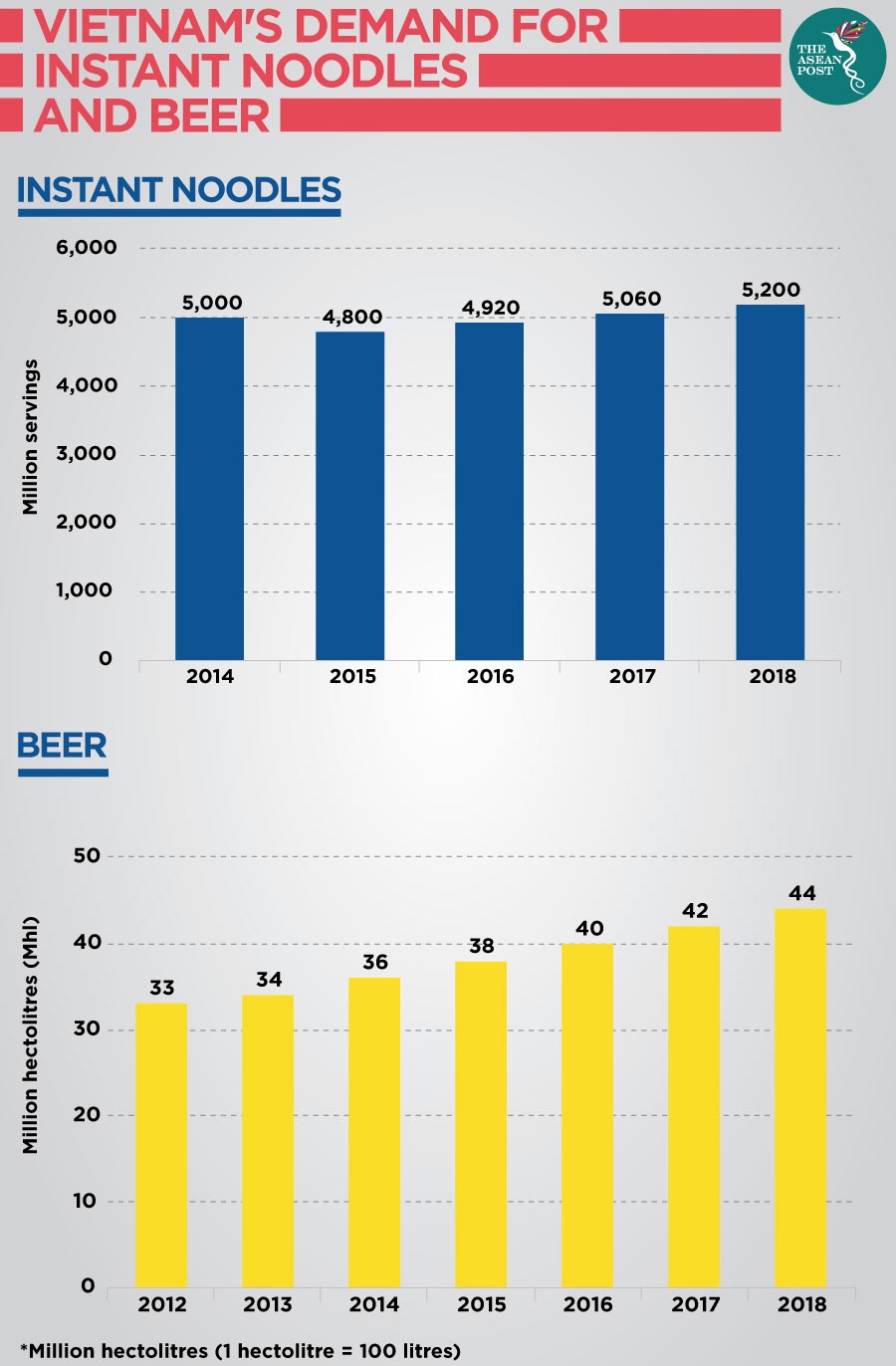The news that almost 60 percent of Vietnamese consume excessive salt and alcohol is one of the negative consequences of its remarkable economic progress.
Vietnam’s Deputy Prime Minister Vu Duc Dam raised the issue at a joint conference held by Vietnam’s Ministry of Health and the United Nations Children’s Fund (UNICEF) in Hanoi on Wednesday, highlighting that as much as 57 percent of Vietnam’s population registered low intake of vegetables and excessive consumption of salt and alcohol.
The news should come as little surprise considering Vietnam is the biggest beer market in ASEAN and the fifth largest consumer of instant noodles in the world.

High alcohol consumption
A study published in the prominent medical journal, Lancet in May found that per capita liquor consumption in Vietnam – which is Asia’s third-largest beer consumer after China and Japan – increased 90 percent between 2010 and 2017, the fifth highest in the world.
The report on alcohol consumption in 189 countries also found that the overall rise in Southeast Asia was 34 percent, with traditional big drinkers Europe observing a 12 percent decline.
Vietnam’s consumption of 8.9 litres of pure alcohol per person in 2017 would be roughly one 330 millilitres (ml) can of beer per day per adult, which includes non-drinkers.
“Before 1990, most alcohol was consumed in high-income countries, with the highest use levels recorded in Europe,” said Jakob Manthey, one of authors of the study titled ‘Global alcohol exposure between 1990 and 2017 and forecasts until 2030: a modelling study’.
“However, this pattern has changed substantially, with large reductions across Eastern Europe and vast increases in several middle-income countries such as China, India and Vietnam.”
Linked closely to liver disease, cardiovascular issues and various cancers, excessive drinking also increases the risk of mental health problems and strained relationships.
Strong economy
Another of the report’s authors, Dr Jurgen Rehm, told Vietnamese media that the link between increases in gross domestic product (GDP) and adult alcohol per capita consumption was “almost perfect” in Vietnam – with the country’s weak alcohol policy also contributing to Vietnam’s high alcohol consumption.
The state introduced market-oriented policies under its Doi Moi (renovation or reform) programme in the mid-1980s which helped lift more than half of the country’s population out of poverty.
Vietnam’s GDP per capita has multiplied 10-fold since 1985, and large state-owned industries such as textile, food, furniture, plastic and paper are major drivers of the economy – along with a strong manufacturing export sector.
On Thursday, global credit ratings agency S&P Global Ratings affirmed its 'BB' long-term and 'B' short-term sovereign credit ratings on Vietnam, saying it expects the country’s stable economy to continue expanding rapidly thanks in part to robust foreign direct investment (FDI) inflows.
Vietnam’s urbanisation rate is expected to reach about 40 percent by early 2020 according to the Vietnam Urban Development Association as more and more Vietnamese make the move to cities in search of better economic opportunities. Consequently, busy lifestyles in urban areas have taken a toll on healthy eating habits.
High salt intake
A study on salt intake in Vietnam’s largest city, Ho Chi Minh City, found that 73 percent of households regularly consume instant noodles, 37 percent regularly consume canned food and 31 percent regularly consume sausages.
While these are all foods with very high salt content, the ubiquitous instant noodles are perhaps the most harmful. A recent study of 707 different flavours and packaging of instant noodles sold in six hypermarkets and retailer chains in Malaysia found that 90 percent of them exceeded the daily salt intake recommended by the World Health Organization (WHO).
Vietnam is the world’s fifth largest consumer of instant noodles behind China, Indonesia, India and Japan – with Vietnamese consuming an average of 54 servings of instant noodles per person in 2018.
Vietnam’s Department of Preventive Medicine under the Ministry of Health last year said that Vietnamese adults consume 9.4 grams (g) of salt a day, which is almost twice as high as the WHO’s recommendation (5 g a day).
Dr. Truong Dinh Bac, Deputy Head of the Preventive Medicine Department, warned that Vietnamese should cut their daily salt intake in half to prevent high blood pressure and cardiovascular disease and decrease the risk of kidney failure, osteoporosis and stomach cancer.
While health issues surrounding excessive drinking and salt intake have long been proven, it seems that in Vietnam, such research is falling on deaf ears.
If left unchecked, Vietnam’s high alcohol consumption and salt intake could derail its economic dreams and it is up to the related ministries and agencies to implement suitable policies to address these concerns.
Related articles:
Vietnam seeks windfall selling $7 billion brewery in slices
